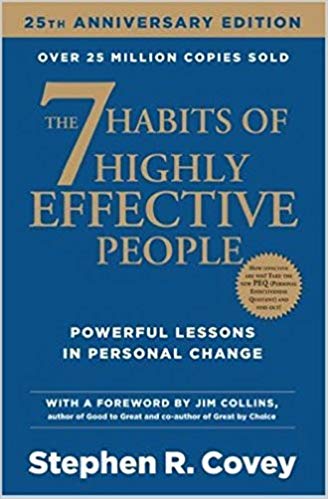

This article is an excerpt from the Shortform summary of "The 7 Habits of Highly Effective People" by Stephen Covey. Shortform has the world's best summaries of books you should be reading.
Like this article? Sign up for a free trial here .
As life constantly changes, how do you keep your focus on your values and goals? How do you make sure every small action you make is moving you closer to your destination?
To achieve the life you want, you must start with the end in mind. This means identifying your big-picture goals—the life you want to lead, the character traits you want to embody, the impact you want to have on those around you—and then ensuring each daily action is in line with it.
Keep reading to learn the importance of setting a big-picture goal for getting the life that you ultimately dream of.
Begin With the End in Mind
It’s easy to get sucked into the fast pace and stress of day-to-day life, working furiously to climb the ladder—but sometimes you reach the top rung only to realize that the ladder was leaned up against the wrong wall. You may accomplish a short-term goal (e.g. a job promotion, an income level, a diet goal), but when you get there you realize that along the way you sacrificed things that were more important in the grand scheme of things. When your ladder is leaning up against the wrong wall, every rung you climb only gets you closer to the wrong destination, and the more furiously you work just gets you to the wrong place faster.
By beginning with the end in mind, you create everything twice: You first envision the result you want and the efforts that must go into achieving it, and then you carry it out. Begin every day by reaffirming your values and your destination, and that will help you carry out every action throughout the day in pursuit of that goal.
There are all kinds of pursuits and projects in which creating things twice is standard practice.
- In home construction, your first creation is the blueprint, showing where every beam and doorway will be placed. To avoid expensive mistakes, you don’t hammer a single nail until every detail has been planned out.
- In business, you can’t launch a company until you’ve outlined every aspect: What product or service are you selling, who is your target market, how are you reaching it, what will your financial structure be, how many employees will you need? Acting before you’ve created a thorough business plan makes it very difficult, if not impossible, to succeed.
- In parenting, if you want your children to grow up to be independent, responsible, and caring, you must try to work toward that goal in every interaction you have with them — through every tantrum and challenge and success.
As people, our behaviors and experiences are also created twice. If you’re reactive, your conditions and conditioning write the scripts of your first creation, and you then live out that identity; if you’re proactive, you determine your second creation by writing your own scripts.
Leaders Make the First Creation, Managers Carry Out the Second Creation
Leaders are responsible for staying aware of the big-picture goal—the first creation—and ensuring that each action is moving in that direction. Whether you’re leading a team or practicing personal leadership, one of the challenges of being a good leader is resisting the urge to get distracted by small day-to-day matters.
In a business setting, an organization functions like a group of people finding their way through a jungle.
- The employees forge progress by hacking their way through the underbrush. They’re dealing with customers and daily problems to help move the company forward.
- The managers support the employees by walking with them and along the way sharpening their machetes, offering strength-building and machete-swinging trainings, giving them new high-tech machetes, and creating work and payment schedules.
- The leader climbs to the top of a tall tree to get a bird’s-eye view of where the employees and managers are heading through the underbrush. If they’ve ended up in the wrong direction, the leader can yell down to the crew that they’re in the wrong jungle.
Leaders are responsible for being aware of changing industry and market conditions, and effective leaders can’t have this big-picture view if they allow themselves to get caught up in the underbrush.
Personal leadership follows the same principle: You’re leading your life in a deliberate way toward your goals. Although you have to also be your own manager and machete-swinger, if you don’t keep your attention on the big picture—your first creation—you could end up in the wrong jungle.
———End of Preview———

Like what you just read? Read the rest of the world's best summary of "The 7 Habits of Highly Effective People" at Shortform . Learn the book's critical concepts in 20 minutes or less .
Here's what you'll find in our full The 7 Habits of Highly Effective People summary :
- How to prioritize the hundred tasks you have to focus on the one or two that really matter
- The right way to resolve every disagreement and argument
- How to avoid burning out and succeed over 20+ years






